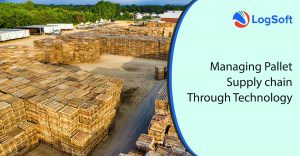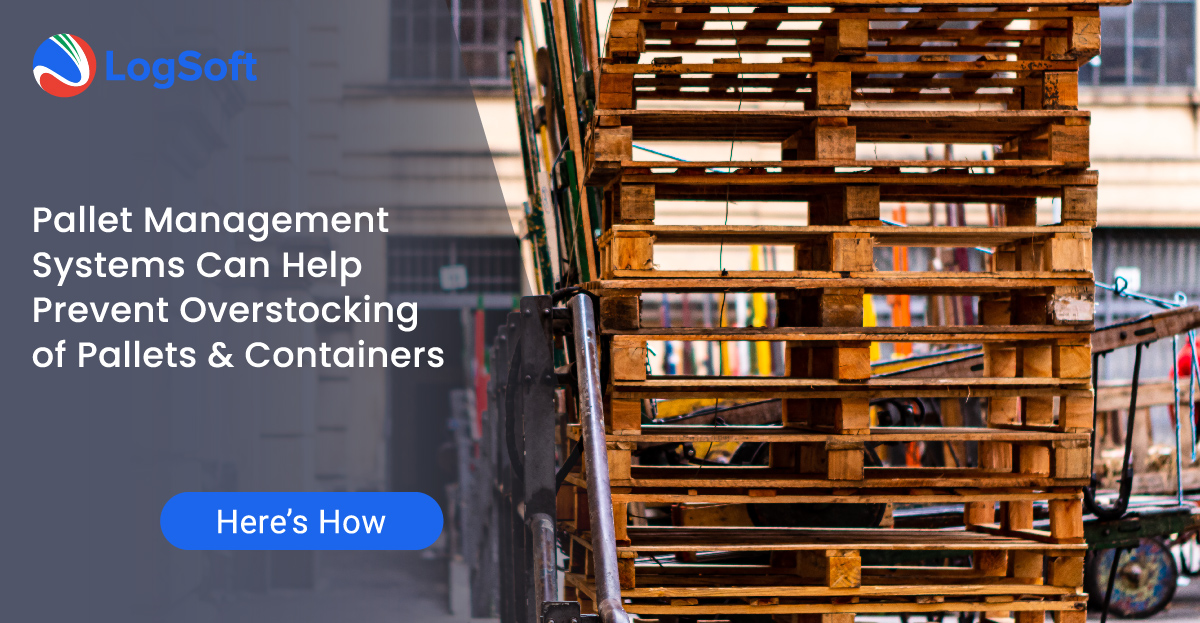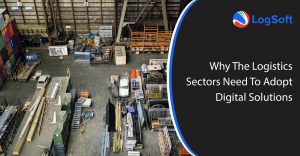When working in the pallets, crates and container supply chain, as any part of the supply chain – you need an optimized supply and an effective pallet management system chain to make sure there is a smooth process flow.
Working with large volumes of Returnable Transport Packaging (RTP’s) you need to ensure that you as a business have a thorough and efficient pallet management system in place that helps you track and monitor your entire supply chain on a single platform.
By investing in a pallet management system you are making an investment in less transit time, maximum utilization of your resources, better life-cycle management and overall a lesser load on your bottom line.
Many supply chain professionals depend on old school methods to track and monitor their pallets and containers, which makes optimization a harder target to achieve.
What is a Pallet Management System?
A pallet management system or software is essentially an application that helps you maximize your pallet management supply chain efficiency. A pallet management software can help you optimise your supply chain not just in terms of cost, but much more in terms of creating an efficient and uninterrupted supply chain.
Different pallet management software can be used for the digitization of various aspects of your supply chain; for example for tracking and monitoring the transportation of your RTP, automating counting of pallets and monitoring the speed of RTP moving throughout the supply chain.
8 Reasons Why Returnable Pallets May Be Overstocked
Shortages cause premeditated fear. The fear of running short is one of many reasons that lead to overstocking of RTP’s, crates, pallets and containers.
Here are a few more:
Urgency to ensure production schedules are matched
An entire production line can sometimes be impacted without pallets or crates to transport your goods.
For example, if you are a car manufacturer and are making specific parts that need to be transported, without sufficient containers you will have excess parts in production if the previously made parts are not transported to their next location.
Warehouse inventory offsetting
When inventory is produced and warehoused in a reusable supply chain – for example pallets or containers – anything in use is an asset that is effectively out of circulation and needs to be offset.
This is a concern for those who are a part of a pool of RTP supply chain assets – where you are mandated to recirculate the pallets and crates at fixed intervals to ensure you don’t end up paying a hefty holding fee.
Demand-side fluctuations
Sectors such as FMCG or agriculture generally have a fairly steady throughput, however, other sectors such as automotive spares, commodity goods, or textiles may not be able to move their goods as quickly with the same degree of predictability.
Another instance where some RTP such as crates and pallets get held up or get out of circulation is if the packaging gets used as display cases.
Such RTP would only reenter the supply chain once their purpose as a display item is served or the product is depleted from the container.
Coping with split loads
A split load is when a single shipment gets split into smaller loads that are destined for different destinations.
As a consequence of this, additional supply chain assets are required down the line to handle the loads.
Delays in reverse logistics
The task of recovering your RTP can become tedious when a supply chain is not efficiently managed. You may not have a track of pick-up and drop-off points, how many pallets are being loaded and unloaded, how many are damaged and how many are actually being returned to you.
Buffer stocks
To offset any shortfalls – a buffer of RTP containers becomes crucial. If you get a shipment and have enough containers to keep the good moving – you lose out. So for many, having a buffer stock becomes invaluable.
Misplaced and lost inventory
RTP gets lost, misplaced and damaged very often. It’s a difficult task to always be able to identify the leak and fix it in a complex supply chain.
This encourages suppliers to overstock as they may not have full visibility of their supply chain.
Lack of automation
Many supply chains are managed in-efficiently by manual methods. That results in counting errors of pallets that are incoming and outgoing and causes pressure to keep stock ‘just in case’.
While there is no 100% automated leakproof solution that can effectively carry out every simple task in the supply chain seamlessly – having better visibility of aspects like the movement of RTP, location, pick-up, drop and automated counting can help resolve and reduce some of the overstocking tendencies.
This is where it becomes essential to consider introducing a pallet management system to your supply chain.
Cost implications of overstocking reusable containers and pallets
Added rental fees
If you are going to introduce extra stock into your supply chain, it’s pretty simple – you will need extra space to keep the containers you are stocking up.
Paying to be on stand-by
Any added stock as a buffer may or may not get used in your supply chain – either way you will have to account for their incoming and outgoing shipment charges.
Added working capital
As you are increasing your investment to create the buffer stock, you will have to account for larger working capital.
Added warehousing and storage cost
Every square foot of a warehouse or storage space will cost you. You will have to invest additionally for extra pallets and containers introduced into the supply chain as a buffer.
How can you reduce pallet overstocking in your supply chain using a pallet management system
Supply chains need to be optimised to be as efficient as they can be to ensure you have a competitive edge.
A poorly managed supply chain with poor tracking, visibility and movement of supply chain assets can be invaluable to your bottom line and can also significantly contribute to minimising surplus and waste of assets. Pooling or purchasing pallets, crates and containers – both can be difficult to track and manage when you can’t see what’s going on.
A pallet and container management system like LogSoft can help you streamline various aspects of your pallet inventory and minimize losses.
The first step to becoming more efficient at managing your supply chain is not just visibility of your supply chain but also the ability to get that visibility on a single digital platform.
By having pallet management software in place, you can benefit from a more efficient asset tracking system that allows for faster, more consistent, and more accurate visibility of all inventory.
Having a pallet management system could help reduce safety stock by a third and returnable supply chain asset shrinkage by over half.
Currently used supply chain management processes depend on manual recording which makes it difficult to get all stakeholders of your logistics operations to adhere to any set standards or to collaborate effectively in order to log and provide the right information.
LogSoft makes this simple by allowing users to give limited access to various data points to the respective stakeholders. This way, you remain in control and also have full visibility of what’s happening in your supply chain.
By investing in the right Pallets and Container Management Software You could be putting your funds to better use.
With more traceability and visibility of your pallets and containers, you can ensure your assets move as seamlessly as possible through the supply chain and back to you.
Last but not the least, you can ensure your pallets and containers are not over-stocked or kept as buffers beyond a certain time frame or period. Better tracking means better management.


